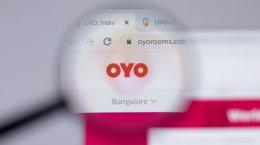When I asked Laxman Singh, a migrant from UP living in a low-income neighbourhood in Mumbai, on why he was reluctant to open a zero-balance bank account and not deal with the various risks associated with holding cash, he told me that he had no need for it because he has no savings and he does not like to visit the bank branch. For centuries his forefathers have also lived hand-to-mouth.They haven’t needed to or been able to open a bank account.
According to the World Bank, nearly 60% of Indians are still unbanked. But when I asked Laxman if he would pay to have access to a convenient, reliable and instant money transfer service, like a Western Union or M-Pesa, which I described to him, he immediately saw the benefits in a better way to send money to his family in UP, something that he does on a monthly basis, just like millions of other migrants across India.
Now imagine Laxman being able to open a no-frills bank account at the nearby kirana shop in Dharavi by filling out a KYC form as described by the shop-owner, someone he knows and trusts. After this, Laxman is free to use this shop or any others that are part of the bank’s business correspondent (BC) network to make deposits and withdrawals and to transfer money to other users.
All he needs is a mobile phone – whose unique number authenticates his identity when he carries out a transaction – and a basic ID proof when he first opens his account. Effectively, he can now store and send money instantaneously and securely from a very accessible and widely distributed set of outlets that he would rather transact at than at a bank branch or ATM. For a cashless transaction, like an account-to-account transfer to send money to his wife in north India, he doesn’t need to visit the BC, only to send a SMS through his mobile phone.
Currently most of the domestic money transfer market is served not by banks and post offices but by informal couriers, preferred because of their better accessibility, speed and customer service compared to the long lines at the post office and the burden of additional delays and ‘transaction costs’ imposed by the postman at the receiving end, usually in rural India.
And the larger payments market consists not just of money transfer from migrants like Laxman, who collectively send several thousand crores worth of small remittances through couriers, banks, post offices, friends, relatives and co-workers, but countless everyday payment transactions comprising merchant payments (e.g. for groceries, movie or train tickets), utility payments (e.g. for electricity, insurance, water bills), mobile recharges or top-ups, small-value payroll or pension disbursements, government subsidy payments such as NREGA in addition to banking services like recurring deposits or repayment of loans. In India, for both money transfer and other types of payments, cash is dominant due the lack of penetration of the banking system.
The reason we still do not have an efficient mobile money transfer system despite very high mobile density is essentially because it’s not allowed. The conservative views of the RBI that the payments system be bank-led and its reluctance, till now, to let telecom companies operate as mobile payment operators means that transfers of value between pre-paid cash balances of millions of Indians are not allowed, as in M-Pesa in Kenya. Banks have been encouraged, even mandated, by the government to promote financial inclusion – to bring the poor and marginalized into the formal banking system by providing them subsidized credit and deposit services.
But they have failed to adequately deliver on this mandate largely due to the difficulty of the ‘last-mile’ distribution challenge in rural areas. This has given opportunity for specialized business models to emerge targeting the poor, for example non-bank finance companies that have filled the vast credit demand of this segment, the largest amongst them, SKS Microfinance, gaining enough scale to prove that an exclusive low-income customer focus is not incompatible with sustained commercial success and even an oversubscribed public listing.
However, while the microfinance story is well known and the business model for efficient delivery of credit to the rural and urban poor now widely replicated, on the savings side of financial inclusion, the story has been nearly the opposite. While the RBI’s Business Correspondent framework – effectively allowing banks to extend branchless operations through rural outlets classified as BCs – has resulted in the creation of millions of new bank accounts, the sad reality is that a lot of these accounts have been completely inactive.
The main reasons for this have been a prohibition on the BC charging the customer, requiring the bank to incentivise the BC, and the restriction on allowing for-profit institutions to act as BCs (for-profit individuals like kirana shop owners are allowed). However, on both these key issues, the RBI has recently liberalized its earlier stand. This should result in a significant improvement of the dynamics, with the entry of corporates as BCs and their natural focus on creating sustainable business models, in this case providing no-frills yet decent quality banking-type services at a modest price to end-customers who are willing to pay for valuable services like cash deposit, money transfer and bill payment.
As important as these relaxations to the BC guidelines, the RBI has also recently re-articulated the mobile banking policy and proposes to do the same to the payment and settlement regulations, addressing some of the key bottlenecks preventing the emergence of a commercially viable model to address this market.
Significantly, it has recently allowed Airtel to start providing limited mobile banking services, allowing the telco’s customers to use their mobile balances to pay bills and do shopping at signed-up utilities and merchants, but not yet to transfer money to other users or to withdraw cash. As a result of these critical regulatory developments and their own success at developing relevant technologies and distribution networks, both mainstream mobile payment companies as well as various start-ups are looking to be the first to capture different parts of the mobile banking and payments market.
But all new players will have to face the venture risk associated with setting up a new national distribution platform and the extensive marketing effort (both ATL and BTL) required to acquire and educate first-time banking customers and then drive transaction activity through deposits, remittances, merchant and utility payments, mobile top-ups and other key services. This is the same challenge that has been faced by the likes of ALW, Fino and others, some of whom have gained considerable scale, but not managed to do so profitability.
However, mobile technology, as opposed to capex-heavy biometric devices installed in the retail outlets, has the potential to dramatically reduce the cost, to less than Rs. 4 per transaction versus Rs. 40 at a bank branch. It also dovetails very nicely with the government’s Unique ID initiative and can both contribute towards the UID’s rollout to low income citizens and benefit tremendously from UID implementation, which promises an end to client authentication concerns.
Using mobile technology to allow the masses to save and transfer money can effectively deliver the other side of the financial inclusion coin. It’s also a huge business opportunity but presents the challenge of delivering a new product to a new segment.
Ultimately, whether it works will depend upon understanding a low-income customer like Laxman, whether, and at what prices and preferences, he chooses to consume particular banking services if they are provided at his doorstep. And then getting the execution right on technology, bank alliances, distribution and marketing to create platforms that can deliver those services in a commercially-viable and scalable way to skeptical and price-conscious customers who have not used banking services before.
This is an enormous challenge which will require both patient capital and entrepreneurs who can build alliances and execute on the ground. But if they succeed, they will not only create tremendous commercial value, but also help contribute significantly towards the goal of achieving meaningful financial inclusion in India.
(Kartik Desai is Vice President at Lok Capital, an India-focused social venture capital firm delivering equity capital for Indian microfinance institutions and social enterprises. The views and observations expressed here are his own and do not necessarily reflect the views of Lok Capital.)





